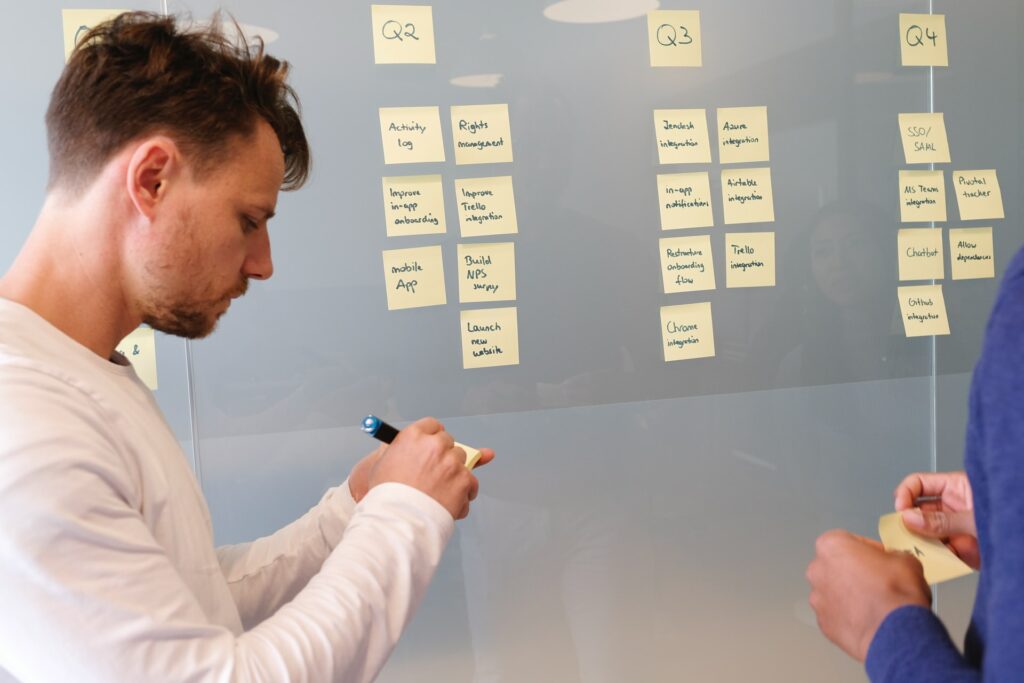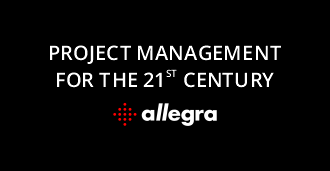Project Controlling: The Basics
Overview
In order to be successful in project management you need to ensure precise planning, but also you must check that you are consistently checking that everything is running according to plan! All of this really encompasses the term ‘Project Controlling’. This is quite a broad term for something pretty extensive, it’s not just something that occurs by analysing key figures. So what does Project Controlling really mean, and what does it really entail?
What does Project Controlling mean?
The term is defined as follows:
"Project controlling describes all activities necessary to control a project throughout its entire duration. It includes the concrete project calculation, scheduling as well as communication and financing of project’s in a company" – REFA Lexicon.
Clearly based off the above definition, Project Controlling plays a big part of Project Management.
We like to say that the goal of projects should be to ensure the achievement of all the pre-specified project goals. As was implied before, taking control of ones project in a proper way requires extensive consideration and analysis. Project Controlling is like a Control Loop. The cycle of Project Controlling stems from the tasks of project controlling and constant comparison, from the beginning target formulation to final completion.
Prerequisites for Project Controlling
In order for Project Controlling to be successful, some requirements must be met before the project commences. The issue of transparency is particularly important in project controlling. This is because it is especially decisive for the big picture and the actual goal. All small tasks aimed towards achieving the main goal should be based around the ‘SMART’ formula. This is essentially making sure the project and its subparts are specific, measurable, attainable, realistic/relevant and timely! This allows clarity for scheduling, the appropriate resource utilization and the ultimate desired result.
What are the different tasks of Project Controlling?
In summary, the main tasks of project controlling are:
• Accompany planning with regard to services, costs and deadlines required for the project.
• Coordination and implementation of countermeasures in the event of deviations to the original project plan.
• Classification of the projects into remaining entrepreneurial activities.
• Monitor and control through regular checks of progress and quality in all project outputs and outcomes.
When one processes these tasks you also ensure that there is always an up-to-date and fact-based basis for all communication with stakeholders, clients, but also the project manager and all colleagues.
Depending on the organisation at hand, the size of the project, the client, Project Controlling must always support the project manager and his team. You can have one or more controllers analyse progress and coordinate countermeasures so that project management in case of emergency. You can delegate specific project controllers to completing specific tasks as well for increased co-ordination and efficiency.
When it comes to smaller projects or with a small number of participants, it can also happen that the project manager takes care of controlling. In this case the tasks also have many overlaps, with the aim of successfully completing projects.
Clearly controlling a project is going to have several influencing factors assisting this. As projects are always in conjunction with achieving goals, looking into operational parameters etc. there are some frameworks to consider when controlling a project.
- Performance progress: Are the correct tasks done on time and in line with the schedule?
- Milestones: Will all milestones be reached in time, have they been set realistically?
- Dates: Is there a delay in processing the project, if so why?
- Cost: Is the planned and available budget sufficient to complete this project successfully?

Preparation, planning and project calculation
Since project controlling is intended to measure and ensure the success of a project in its entirety, progress and quality of projects, they must be thoroughly prepared, planned and calculated. These include, among other things:
- The distribution of tasks is fair and sufficiently involves parties that meets capabilities of the team members.
- The scheduling includes realistic milestones and time buffers.
- Clarity about the cost and distribution of the available budget across all tasks falling within the scope of the project.
Collect, review and adjust key figures
It goes without saying that any traceable figures that occur during the conduction of the project need to be carefully just and reviewed. This leaves room for adjusting the key figures mentioned as the target if necessary and thus being able to address any failures in good time before too much damage has been done.
In order for project controlling to have meaningful measurements and analyses, a regular review of all important parameters is very necessary. This includes, among other things, a constant check, such as a target/actual comparison, of data such as services rendered, completed tasks and sub-projects or time progress.
Project Controlling methods & examples
To get a better grasp of what methods are being utilised for project controlling we have compiled a few examples to illustrate this. There are concrete procedures and methods in project controlling. Which method is most suitable for your own project depends on many factors, such as:
• Scope and importance of the project at hand
• Size of the company and size of team involved in project
• Relevant key figures and measured values for project
Work Breakdown Structure
The basis for all plans and subsequent success measurements is good and thorough project planning. The work breakdown structure (WBS) is usually used to achieve this. One needs elaborate detail in the project in its underlying structure. The WBS creates a logical link between the individual elements of the project, e.g. after a specific project phase or content assignment. The WBS enables accurate prioritization, resource allocation and appropriate scheduling with advanced methods.
Earned Value Analysis
Another method used for effective Project controlling is Earned Value Analysis. The purpose of this analysis is to review and assess progress to the final value of the result. The basic elements are the planned value, the actual cost and, most importantly, the earned value.
The advantages of the EVA lie in the objective comparison of deadlines and services rendered. It allows you to assess costs and completion dates while the project is running. In order for this method to be used at all, the project must be very precise and practically completely planned. Overall, this method requires a lot of knowledge of project management and preferably a lot of experience in Project Management.
Traffic light controlling
Another way to monitor projects ongoing is by using the so-called traffic light controlling (also traffic light system or traffic light method). This variant is particularly helpful thanks to its clarity like that of on a road. The status of tasks is evaluated on the basis of the three traffic light colours green (go), yellow (stalling) and red (stopped).
Traffic light controlling allows an accurate assessment with a particular focus on time management and is therefore particularly suitable for projects with many deadlines happening simultaneously, the achievement of which should always be checked and ensured. Another advantage of this method is that the traffic light phases are always up-to-date and you are immediately up to date.
Other methods
If you’re interested here are a few other methods which people make use of when trying to control a new project underway:
• Milestone plan
• Milestone Trend Analysis (MTA)
• Risk analysis
• Target/actual comparison

Project Controlling software
Now that you’ve read a little bit about what goes into Project Controlling, and project management at large you’re probably thinking about software which could be helpful in achieving this. In a nutshell, Allegra Software is what you’re looking for. With extremely advanced software which can be customisable to meet your needs you will be sure to have full control over the management and planning of your project.
Summary
Project controlling is complex and goes far beyond the monitoring or control of a project. The methods simplify decisions and ensure profitability and punctuality. However, this is not possible without precise planning and comprehensive transparency. However, if these framework conditions are met, you benefit, among other things, from:
• Early detection of risks threatening your project
• Clear targets to reach
• Simplified communication with stakeholders and clients due to accuracy in progress
• Transparent analysis of performance, cost and punctuality
If you enjoyed learning about the importance of project controlling and how certain methods can be used to help you do that you may enjoy other blogs available on the Allegra Blog site such as:
Capacity Planning: What is it and how to Implement it
Understanding Effectiveness and Efficiency
Don’t forget to explore the free online demo which Allegra offers to get a sense of how thorough the software is and how it will make an extraordinary difference to the way you conduct and manage your projects going forward!




